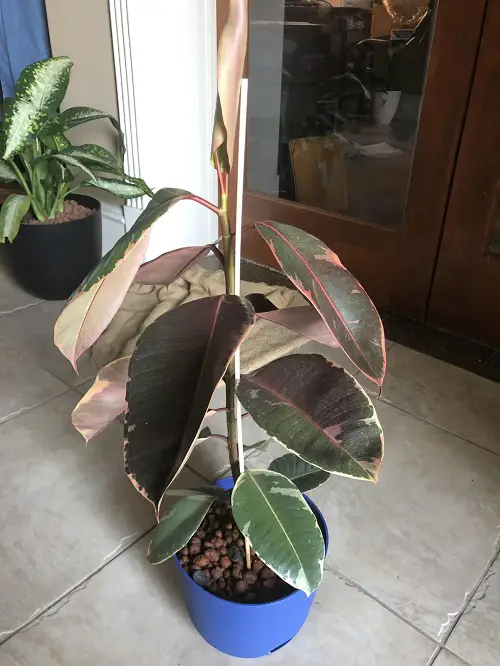Are you worried about your rubber plant leaves curling and falling off? These tips will revive it back to its glory.
Rubber plants can be a focal point indoors, and keeping them thriving is the best way to ensure they make an impact. However, if you fail to take the right care of them, they will lose their signature, big and glossy leaves. To help them stay as amazing as they are, here some tips for you!
Rubber Plant Leaves Curling and Falling Off – Reasons and Solutions
1. Insufficient Watering
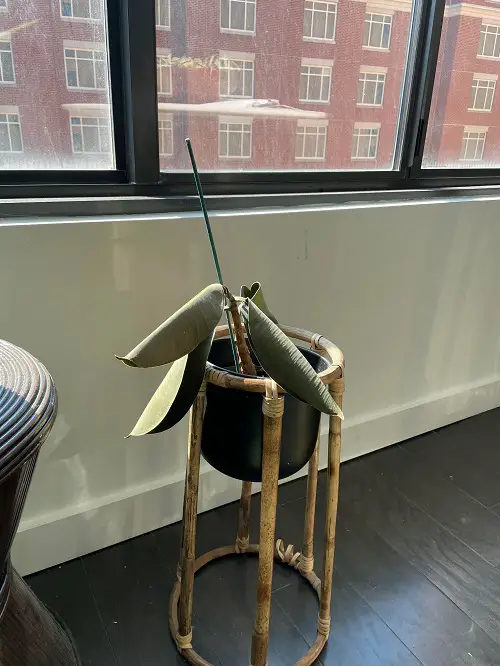
Over or under-watering, can both lead to stress in the plant. The best way to avoid this from happening, is to water when the topsoil feels a little dry to the touch.
Do not water your rubber plant daily, and do not let the growing medium go completely dry, ever!
2. Insufficient Humidity
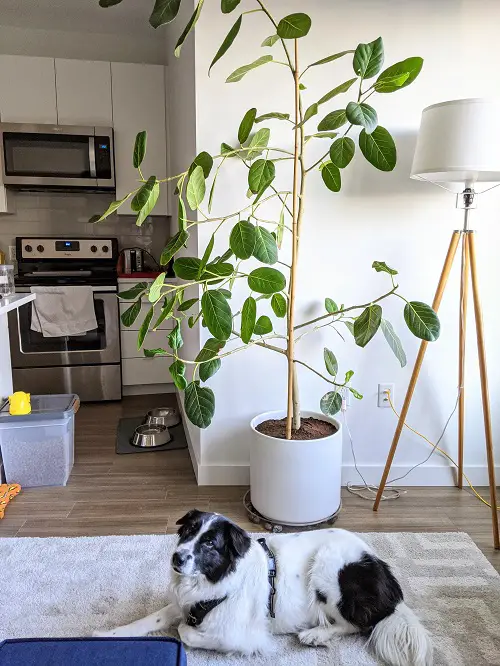
Rubber plants are native to tropical regions and thrive in high humidity. Dry indoor environments can cause leaf curling and dropping.
To combat this, make sure to keep a humidifier near the plant, especially if you have a centrally heated room. You can also group 3-4 of these together to create a micro climate.
3. Improper Lighting Conditions
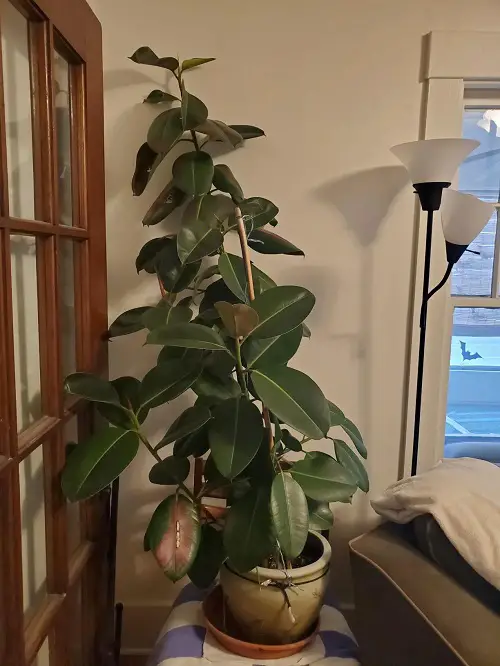
With rubber plants, you have to strike the right balance of light and shade. Too much light, and the leaves will burn. Too little, and the plant will droop.
The best bet? Keep it near an east facing location, where it can bask in the mild morning sun for 3-4 hours—bright light without the worries of getting the leaves getting scorched! For the rest of the day, it will get indirect light at this location, too.
4. Pest Infestation
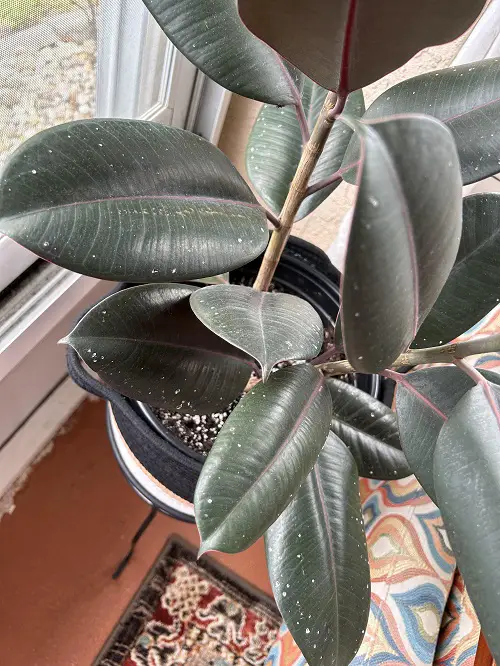
Pests like spider mites, mealybugs, and aphids can cause significant damage to rubber plants, leading to curling and leaf drops.
Keep an eye on these pests and make sure the plant gets proper air circulation. Refrain from wetting the foliage, too.
5. Temperature Stress
High temperatures and heat stress can cause excessive water loss through transpiration in the leaf, as it tries to cool itself. This can lead to upward, or inward leaf curling.
On the other hand, if the plant is exposed to cold temperatures, it can lead to yellowing, browning, or discolouration of the foliage.
Rubber plants thrive best in the temperature range of 22-31°C (72-88°F). Please avoid keeping them near AC, heating vents, or neat a window pane that gets cold drafts.
6. Stress from Re-Potting or Environmental Changes
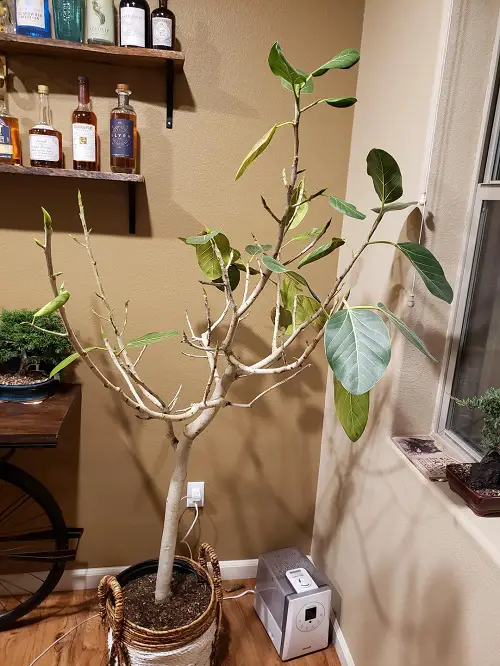
Re-potting can stress the plant sometimes, which can cause its leaves to curl and drop. To avoid it, re-pot the plant only when you see the roots on the topsoil—avoid doing it unnecessarily.
Use a 1-2 sizes bigger pot than the old one (not more than that) and re-plant in a fresh potting mix.
7. Nutrient Deficiencies
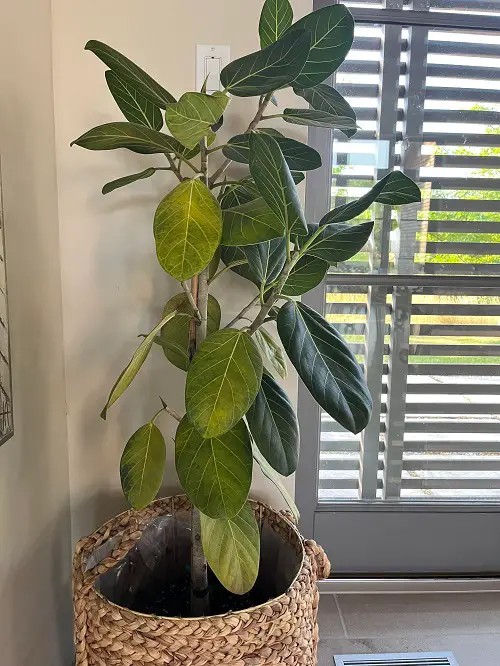
Overtime, the nutrients in the soil deplete and the plant stops getting the boost it needs to grow better and bigger. To combat it, feeding it regularly is the best bet.
Fertilize the plant using a balanced liquid feed (10-10-10), after diluting it to 1/2 of its strength, once a month. Refrain from doing it in the cold period of the year.
8. Root Bound
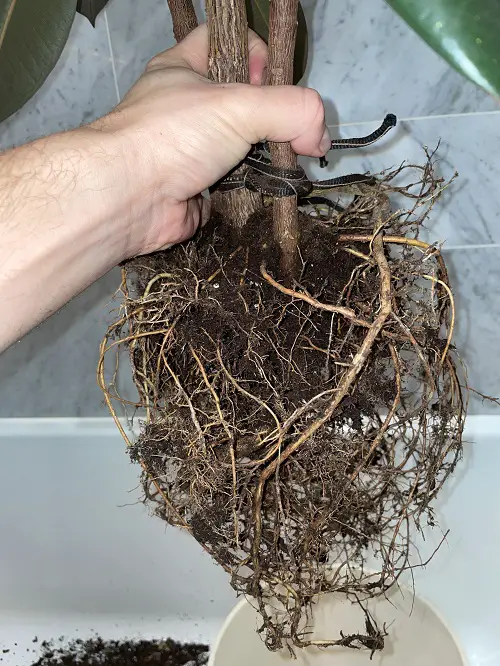
Rubber plants can outgrow their pots and become root bound, which restricts their ability to absorb nutrients and water. If your specimen shows signs of stress, including leaf curling and leaf drop, along with visible signs of roots coming from the drainage hole and topsoil, it’s time to re-pot it.
Re-pot it in a container that’s not bigger than 1-2 sizes, as compared to the older pot. Also, use a fresh potting mix.
9. Natural Aging
As your rubber plant ages, it is common for a few older leaves to curl, turn yellow, and eventually brown naturally. This is completely normal and in this case, just make sure it gets well watered and fertilized along with proper light exposure.



